Veiled chameleon, facts and photos - National Geographic
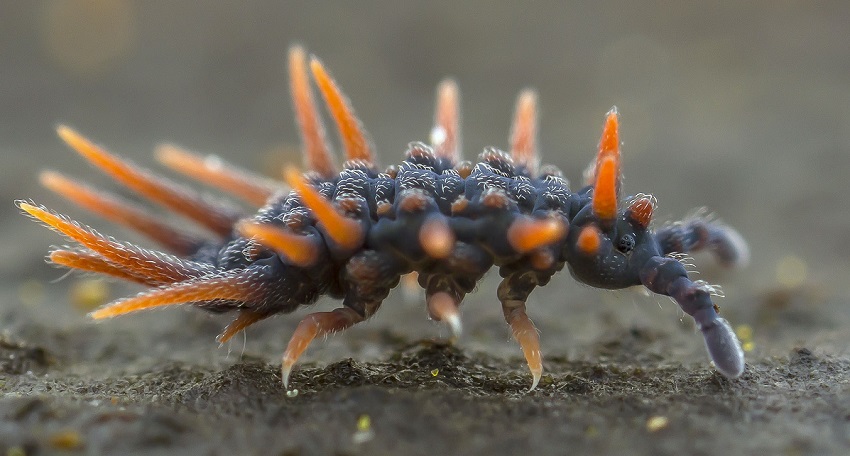 Dragon springtails (pictured) are widely distributed in forests of eastern Australia — yet they're still largely unknown to science. Credit: Nick Porch, Author provided By Nick Porch from Deakin University Which animals are quintessentially Australian? Koalas and kangaroos, emus, tiger snakes and green tree frogs, echidnas and eastern rosellas, perhaps. And let's not forget common wombats. Inevitably, most lists will be biased to the more conspicuous mammals and birds, hold fewer reptiles and frogs, and likely lack invertebrates — animals without a backbone or bony skeleton — altogether. I'm an invertophile, fascinated by our rich terrestrial invertebrate fauna, so my list will be different. I'm enchanted by stunning dragon springtails, by cryptic little Tasmanitachoides beetles, and by the poorly known allothyrid mites, among thousands of others. Australia's terrestrial invertebrate multitude contains several hundred thousand uniquely Australian organisms. Most remain poorly known. To preserve our biodiversity, we first must ask: "which species live where?". For our invertebrates, we are a long way from knowing even this. The Black Summer tollLast year, a team of scientists estimated that the Australian 2019-2020 bushfires killed, injured or displaced three billion animals. That was a lot. But it was also a woefully inadequate estimate, because it only accounted for mammals, reptiles, birds and frogs. Hidden from view, many trillions more invertebrates burned or were displaced by the fires. And yes, invertebrates are animals too.  Admittedly, it's hard to come to terms with invertebrates because they're often hard to find and difficult to identify. Most species are inconspicuous, even if they belong to incredibly abundant groups, such as mites and springtails, which can occur in numbers exceeding 10,000 per square metre. Most invertebrates are poorly known because there are so many species and so few people working on them. In fact, it's likely only a quarter to one-third of Australia's terrestrial invertebrate fauna is formally described (have a recognised scientific name). 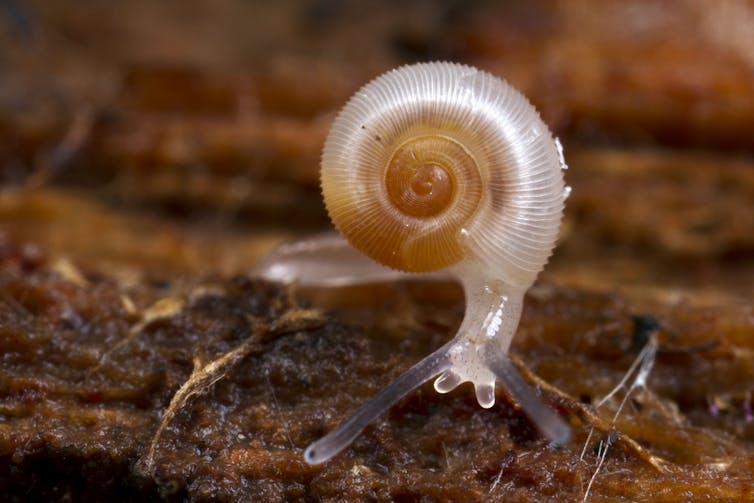 One of the problems invertebrates have, in terms of attracting attention, is that many are not easily seen with the naked eye. Macrophotography can magnify these wonders for a view into a world most of us are completely unfamiliar with. Even then, it often will be hard to know what we see. Everyone will recognise a kangaroo, but who can identify an allothyrid mite? The photo below shows an undescribed species of mite from the family Allothyridae, from Mount Donna Buang in Victoria. The mite family Allothyridae has three described Australian species, and dozens more awaiting description. 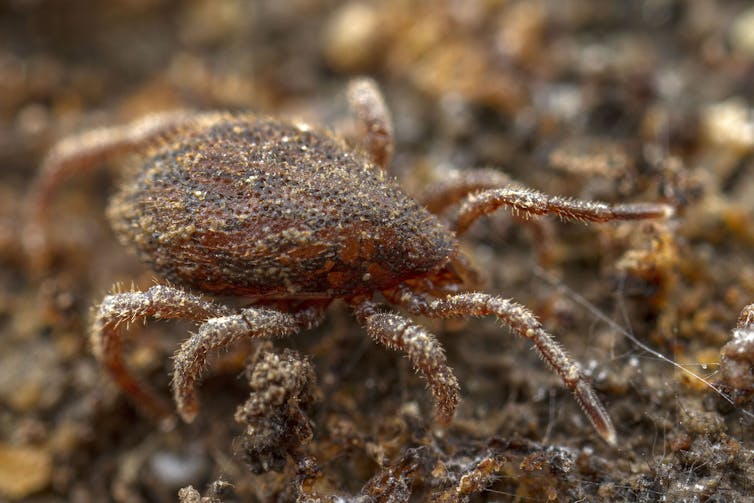 This collage shows a selection of mites found in the forests of southeastern Australia. It's likely many of the species shown here are unknown to science. 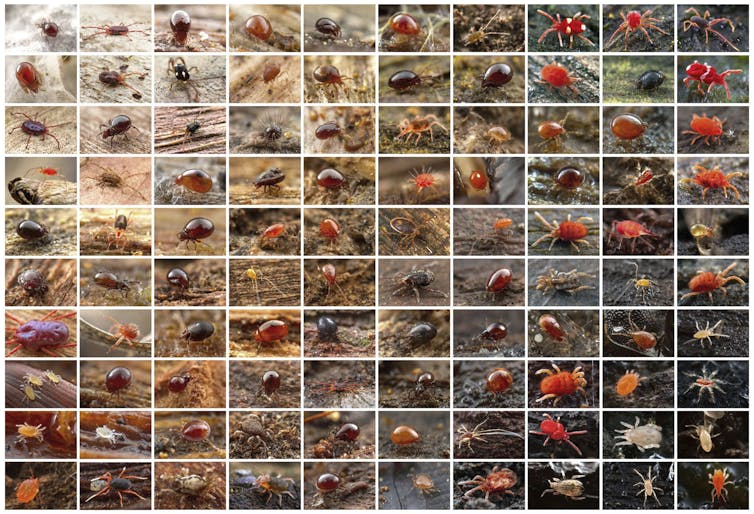 A deeply ancient lineageAnimal ecologists, most of whom work on vertebrates, often joke that I "study the 'food', haha…". They think they're funny, but this reflects a deep seated bias — one extending from scientists to the wider public. This limits the development of a comprehensive understanding of biodiversity that has flow-on effects for conservation more broadly. It's true: invertebrates are food for larger animals. But their vital role in maintaining Australia's ecosystems doesn't end there. Every species has an evolutionary history, a particular habitat, a set of behaviours reflecting that history, and a role to play in the ecosystem. And many terrestrial invertebrates belong to especially ancient lineages that record the deep history of Australia's past. The moss bug family Peloridiidae, for example, dates back more than 150 million years. For context, the kangaroo family (Macropodidae) is likely 15-25 million years old. Their history is reflected in the breakup of the ancient supercontinent, Gondwana. In fact, Australian species of moss bugs are more closely related to South American species than to those from nearby New Zealand. 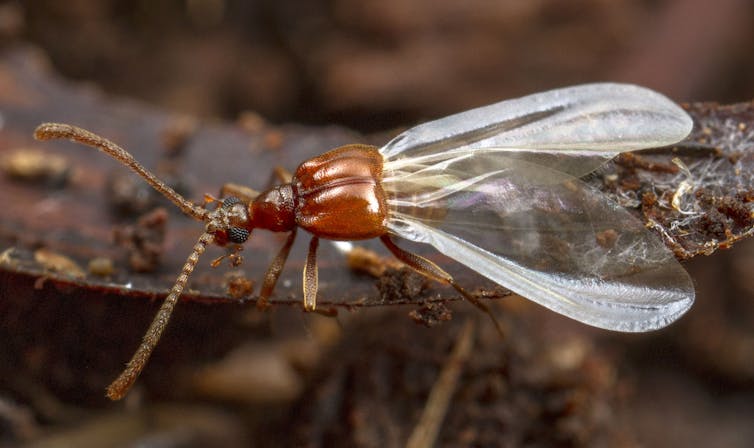 This is a common pattern in terrestrial invertebrate groups. It reflects how the New Zealand plate separated from the remainder of Gondwana about 80 million years ago, while the Australian plate remained connected to South America via Antarctica. Similar stories can be told from across the invertebrate spectrum. The photo below shows a few examples of these relics from Gondwana. 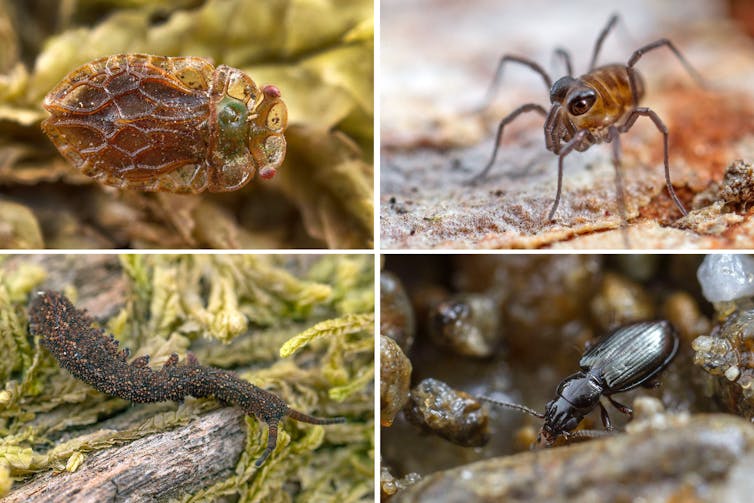 Their fascinating evolutionOverprinting this deep history are the changes that occurred in Australia, especially the drying of the continent since the middle Miocene, about 12-16 million years ago. This continent-wide drying fragmented wet forests that covered much of the continent, resulting in the restriction of many invertebrate groups to pockets of wetter habitat, especially along the Great Dividing Range and in southwestern Australia. A consequence of this was the evolution in isolation of many "short-range endemic" species. A short-range endemic species means their geographic distribution is less than 10,000 square kilometres. A short-range endemic mammal you might be familiar with is Leadbeater's possum, restricted to the wet forests of the Victorian Central Highlands. 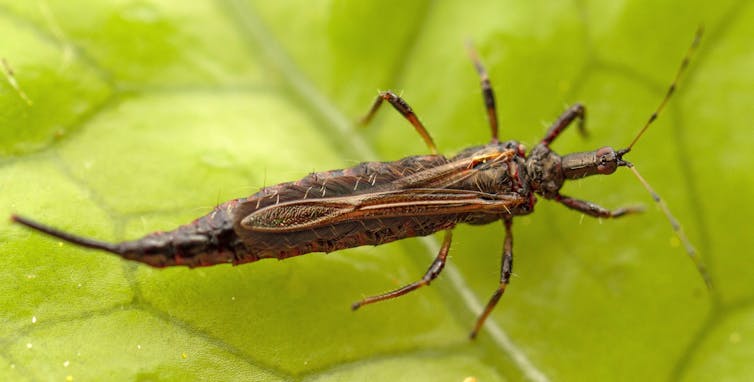 But short-range endemism is much more common in invertebrates than other organisms. This is because many invertebrates are poor dispersers: they don't move between habitat patches easily. They may also maintain viable populations in small areas of suitable habitat, and are frequently adapted to very specific habitats. Take Tropidotrechus, pictured below, a genus of beetles mostly restricted to the same region as Leadbeater's possum. They, however, divide the landscape at a much finer scale because they're restricted to deep leaf litter in cool, wet, forest gullies. As Australia dried, populations of Tropidotrechus became isolated in small patches of upland habitat, evolving into at least seven species across the ranges to the east of Melbourne. 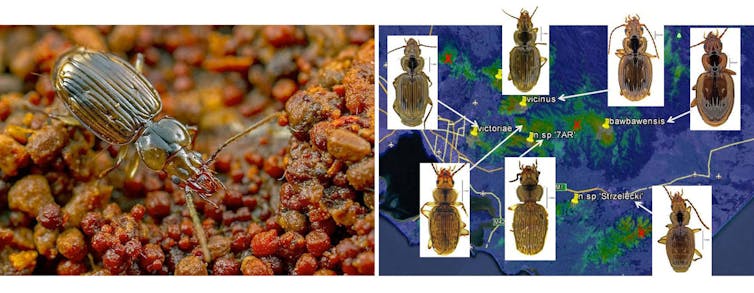 Discoveries waiting to happenThe trouble with knowing so little about Australia's extraordinary number of tiny, often locally unique invertebrates, is that we then massively underestimate how many of them are under threat, or have been badly hit by events like the 2019-2020 fires. If we wish to conserve biodiversity widely, rather than only the larger charismatic wildlife, then enhancing our knowledge of our short-range species should be a high priority. 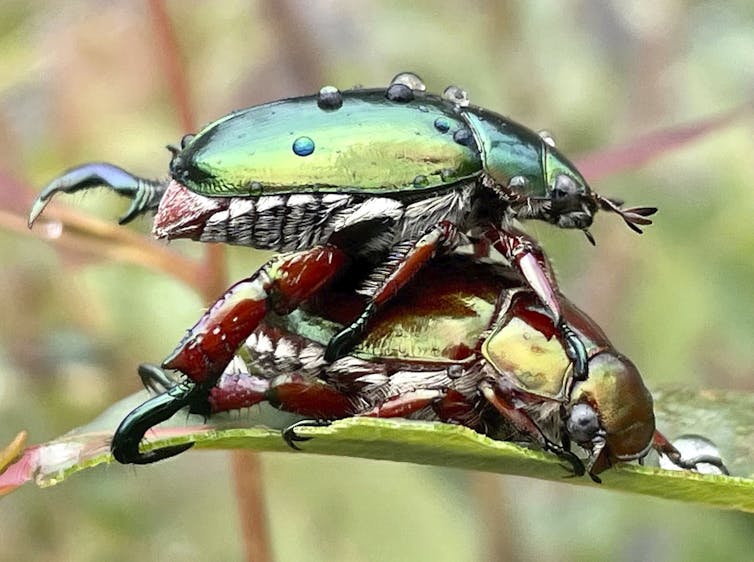 We've only just scratched the surface of Australia's wonderful invertebrate fauna, so there are enough discoveries for everyone. You can join iNaturalist, a citizen science initiative that lets you upload images and identify your discoveries. Perhaps you'll discover something new — and a scientist just might name it after you. Nick Porch, Senior Lecturer in Environmental Earth Science, Deakin University This article is republished from The Conversation under a Creative Commons license. Read the original article.  The ConversationThe Conversation is an independent, not-for-profit media outlet that uses content sourced from the academic and research community. Read science facts, not fiction...There's never been a more important time to explain the facts, cherish evidence-based knowledge and to showcase the latest scientific, technological and engineering breakthroughs. Cosmos is published by The Royal Institution of Australia, a charity dedicated to connecting people with the world of science. Financial contributions, however big or small, help us provide access to trusted science information at a time when the world needs it most. Please support us by making a donation or purchasing a subscription today. |
| Posted: 16 Jul 2020 12:00 AM PDT  Young Rock Pythons snakes. (K.K.Choudhary/TOI,Mumbai/BCCL)Every year, July 16 is celebrated as World Snake Day, with the aim to raise awareness about snakes and its various species around the globe. There exist a total of about 3,458 known snake species in the world, distributed almost everywhere on Earth—the only exceptions being Antarctica, Iceland, Ireland, Greenland, and New Zealand. Among these, about a hundred snake species have been marked as endangered by the IUCN Red List, habitat loss being the main reason behind most of these cases. India houses a plethora of snake species—both venomous and non-venomous. As far as venomous snakes go, a recent study has estimated that more than 1.2 million people in India have died from snakebite between 2000 and 2019, with venomous species like Russell's vipers, kraits and cobras claiming the most number of lives in the past 20 years. However, the fact remains that snakes only bite humans when threatened, and there is a lot more to these creatures—traits and qualities that make them unusual, peculiar and wonderful. On the occasion of World Snake Day, we bring you some interesting facts about these reptiles: Snakes are cold-blooded, literallyMost snake species are cold-blooded and ectothermic—they are reliant on environmental heat sources, and regulate their body temperatures with respect to external factors like basking under the Sun. Due to this very physiological factor, snakes do not like cold weather, as low temperatures keep their bodies cold. Therefore, they are also known to hibernate during winters. Their skins have scalesSnakes' skin comprises scales that help them grow, remove parasites, trap moisture in arid climates, and reduce friction when they slither around. They are also useful in replacing old and worn-out skin. Each year, snakes shed their skins 3-6 times to allow further growth—in a process known as ecdysis. To peel off their skin, snakes slither against rocks, trees, and plants, at times even swimming to complete this task. The discarded skin appears inside-out, just like we remove tight-fitted socks. 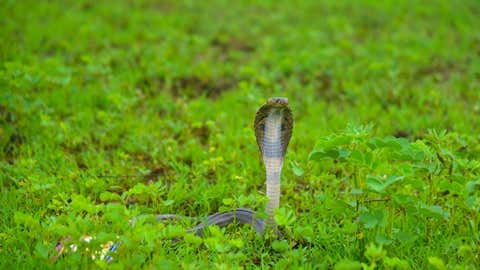 A Cobra snake seen in the forest side on eve of Nag Panchami at outskirts of Nagpur City. (Aniruddha Singh Dinore/BCCL)Interestingly, snakes do not have eyelids; their eyes are instead covered with a single transparent scale. While this scale protects their eyes from any sort of damage, it also allows them to sleep with their eyes open. But on the downside, it takes away their ability to blink. They are 'big' eatersWhen hunting, snakes use their forked tongue to scan their surroundings for prey. Their tongue flicks in different directions to help them sense danger and search for food. According to Nat Geo, snakes can eat animals up to three times bigger than their head. Moreover, the fact that they are capable of opening their mouths up to 150 degrees allows them to eat animals that are 75-100% bigger than their own size. They do indeed have bones!While it is a common misconception that snakes are flexible because they have no bones, the fact is that they are vertebrates—animals with bones, and thousands of them! A snake's backbone (or spine) is made up of many vertebrae that are attached to the ribs. In total, snakes have up to 33 ribs and about 1200 bones. Among their other unusual bodily features is the absence of external ears, which makes all snakes as good as deaf. Instead, they possess an inner ear attached to their jaw, which helps them feel vibrations and sense low-frequency airborne sound. |
| You are subscribed to email updates from "reptiles facts" - Google News. To stop receiving these emails, you may unsubscribe now. | Email delivery powered by Google |
| Google, 1600 Amphitheatre Parkway, Mountain View, CA 94043, United States | |




